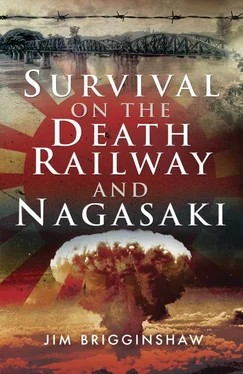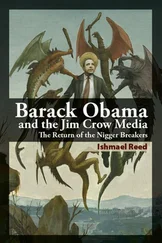Afterwards, the Japanese vowed that a similar fate awaited any other prisoners found outside the camp.
Colonel Hamilton told the men that the death penalty was too heavy a price to pay for their foraging, and ordered them to stop. Not everybody did, but there were no more large-scale operations.
At Mergui, the Australians came into contact with a different type of Japanese. These were kaigun (sailors) whose ship had been sunk in the Indian Ocean. They’d been brought to Mergui to act as guards while they awaited placement on another ship.
The kaigun hated the heitai (soldiers). ‘Japanese kaigun ichi ban, Japanese heitai dame dame (Japanese sailor number one, Japanese soldier no good)’, the sailors told the prisoners.
The Australians never missed an opportunity to use this dislike to turn the Japanese against each other.
The heitai would march the work parties out to the aerodrome and hand over to the kaigun, who had a smattering of English. They also had an entirely different attitude to the war and their enemy. They encouraged the Australians to do as little work as possible and often joined them in foraging for food, some of which was brought by natives to the aerodrome perimeter under cover of the jungle.
However, although the prisoners liked the sailors, they were still the enemy, and it was their job to get rid of them if possible. An opportunity arose when a few sticks of gelignite and some fuses were uncovered while they were clearing rubbish from under the sailors’ quarters. They set the explosives under the house, and planned to sneak back around midnight to light the fuse, but the plan had to be abandoned when no detonators could be found. Without detonators, the explosives were useless. While this saved the Japanese sailors, it probably saved the prisoners too. Had they carried out their plan, many of them would have been executed.
Orders came through in July 1942 stating that the prisoners were to leave Mergui and move north to Tavoy, where the whole of A-Force would be together once more.
The camp at Tavoy had been a Burmese school. It comprised a large two-storey concrete building that had been used for the students and several high-blocked wooden houses where the teachers and their families had lived. The shelter was better than anything previously provided, but the addition of the Mergui contingent meant it was now overcrowded.
On their first day there, a work party was taken out to the aerodrome by truck. Before starting work, they were subjected to a pep talk by Captain Saito, the corpulent Japanese officer in charge of construction. Saito told them they were lucky to be alive. His generosity in allowing them to stay that way should be rewarded by working diligently and cheerfully. They should sing and whistle while they worked.
Sing and whistle? The Australians wondered whether they had at last come across a Japanese with a sense of humour.
Tavoy aerodrome was fully operational. Heavy bombers took off from there almost daily, heading north to bomb Allied targets on the India–Burma front. Some planes returned badly damaged. One just managed to reach the runway before the landing gear collapsed. It slewed sideways, skidded into the jungle, and smashed into some trees.
The Japanese had no mobile workshop, so they left the wreckage there. It was a bonanza for the prisoners, who stole whatever they could move. Pieces of aluminium from the fuselage were turned into dixies, billycans, plates and spoons. Some of the more enterprising prisoners fashioned matchbox covers onto which they scratched lurid etchings of naked women. These were popular with the Japanese, who bought them, but seldom paid.
Rubber hacked from the plane’s tyres became thongs, held onto the feet by rope made from the bark of a tree. They were much prized by the prisoners, most of whom had long been without footwear. Thongs, which became a popular post-war Australian dress item, may have originated at Tavoy in the pieces scrounged from that wrecked Japanese plane.
Bodero wasn’t really surprised when he found out that the leader of the Tavoy business enterprises was the irrepressible Tellemalie. He hadn’t seen him since Changi.
Jim made a point of looking him up.
‘You still seem to be doing all right, Tellemalie’, he said.
Tellemalie nodded. ‘Business hasn’t been bad, but it’ll turn bad if we can’t get another Jap plane to crash. All the aluminium from the last one has been used up. If we can’t get another plane wreck, we’ll suffer a serious commercial downturn.’
Tellemalie decided to take things into his own hands. To hurry things along and to be first on the scene for bits and pieces when they became available, he’d stand on an embankment beside the runway, urging incoming planes to crash. Day after day he stood there, ignoring Japanese orders that no prisoner was allowed near the airstrip.
None of the planes would oblige, however, and Tellemalie grew increasingly frustrated. He would wave a battered Dutch army straw hat at the planes as they landed and shout, ‘Crash, you bastard, crash!’
One day Tellemalie wasn’t there, and they didn’t see him again. His sudden disappearance convinced the other prisoners that his luck had finally run out. The Japanese had surely put an end to his crash routine.
With the wrecked plane now reduced to a skeletal frame, the prisoners turned their attention to the instruments. Some of the parts became two efficient short-wave wirelesses, one of which was hidden in a millet broom used to sweep out the Japanese headquarters. Each morning while the Australian officers met with the Japanese to be given the day’s work party duties, a prisoner would be sweeping out the building. The Japanese suspected that the men had a wireless, but although they searched everywhere, they never thought of looking in the broom that was being used in their own headquarters.
A second wireless was built into a wooden stool on which an officer would sit with the Japanese for the daily briefing. Not one, but two, wirelesses were under the very noses of the Japanese, but they never found out.
The wirelesses picked up the BBC. This news was generally regarded as not very reliable, but at least it gave them something to talk about in the group natter.
One day, a Tavoy work party was out collecting timber for fencing when it came across a herd of goats. It was a situation made to order for hungry men. Both the goats and the prisoners were unguarded.
Jimmy Harris was appointed slaughterman. When he’d singled out a large black-and-white billygoat and had his mates surround it, Jimmy dived in and quickly had it upended and its throat cut.
Now they had a problem. If the guards saw them with the meat when they took it back, it would be going into Japanese cooking pots, not theirs. They’d lose the meat and gain a bashing.
However, the meat was successfully smuggled into camp wrapped in a tattered oilskin cape hidden among the fencing timber. That night, the prisoners’ cooking pots were busy, with goat on the menu.
Native yaks, too, were fair game, so long as the owners weren’t around. When one of these beasts wandered too close to a work party outside the aerodrome perimeter, Zac Watts, a grazier from Texas in south-west Queensland, pointed it out to the Japanese guard. ‘Takusan meshi ichi ban (plenty number one food)’, he told him. ‘We catch.’
The guard disappeared and returned with a long length of rope. Zac made it into a lasso, handed the end to the guard and told him the yak was likely to take off when he lassoed it. ‘You’ll have to hold on to the end of the rope. Don’t let go. If you do we’ll lose the bugger.’
Zac expertly tossed the noose over the yak’s head. At first, it didn’t object, but when the rope tightened around its neck it took off. As instructed, the guard didn’t let go of the rope, which meant he was dragged along by the stampeding animal, his short Japanese legs touching the ground only now and then.
Читать дальше












